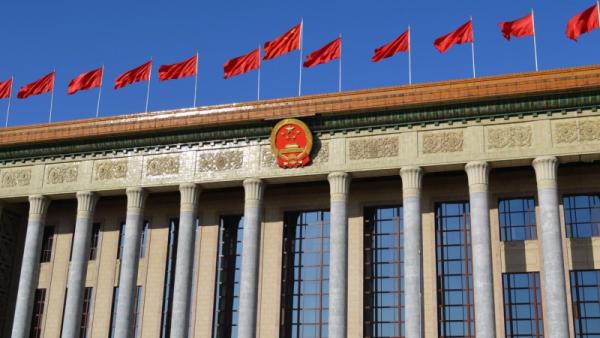Mirko Kuzmanovic / Shutterstock

Marina Zhang, Associate Professor – Research, Australia-China Relations Institute, University of Technology Sydney |
This article appeared in the East Asia Forum on August 15 2024.
China is grappling with myriad challenges, including a real estate crisis, high youth unemployment, private sector uncertainty and surging local government debt. Amid this turbulence, the Chinese Communist Party (CCP) convened a high-level meeting on 15 July 2024 and released a communique largely signalling stability, compromise and projected confidence going forward.
The message from the long-anticipated Third Plenum of the 20th Central Committee emphasises ‘Chinese-style modernisation’ and sets clear political directions to balance regulation and market forces, public and non-public businesses, technology sovereignty and further opening up over the coming five years.
The communique underscores numerous ‘black swan’ events from 2024 to 2029, but also highlights that certain trends will remain unchanged. Intensifying strategic competition between the United States and China, especially in technology, is inevitable. This includes strategies to enhance China’s competitiveness in global supply chains through advanced technology and smart manufacturing. The communique also emphasises promoting science and education, achieving technological self-reliance, urban–rural integration and greater opening up as new priorities.
The overall tone of the communique was notably understated compared to previous meetings, such as the Third Plenum in 1978, which shifted the CCP’s focus from ‘class struggle’ to economic development, or the 1993 establishment of the socialist market economy — both historic pivots that have shaped China’s economic reforms. The 2013 Third Plenum under the 18th CCP Central Committee, the first under Chinese President Xi Jinping, launched comprehensive reforms across various sectors.
The 2018 Third Plenum focused more on institutional and governmental reforms rather than broad economic reforms. Measures included government restructuring, strengthening Party leadership and state-owned enterprises, and enhancing market supervision and environmental management. All of China was instructed to rally around the Party and Xi Jinping to ensure the full implementation of these reforms. This shift occurred amid the trade war initiated by former US president Donald Trump and the subsequent decoupling in technology supply chains, shifting global trade dynamics and heightened geopolitical tensions.
China’s domestic challenges have also expanded, especially since the COVID-19 pandemic. These challenges include the inability to establish a unified national market to absorb its industrial capacity, which has led to ‘overcapacity’ in some sectors where a high global market share masks unprofitable domestic operations. This has resulted in a noticeable retreat of foreign direct investment, outflowing private capital and increased tariffs on Chinese goods abroad.
One of the core tasks in the latest communique is embracing Industry 4.0 and maintaining a leading position in technological and industrial transformation. China hopes to build ‘a system and mechanism to support comprehensive innovation’ in part by fostering science and technology education.
Regulatory restrictions on private-sector businesses in the past five years have created a perception of increased state control over the economy and a preference for state-owned enterprises. This shift towards greater state control has discouraged entrepreneurship among younger generations. The allure of stable employment in the public sector, which offers job security and welfare benefits, can be more attractive than the uncertainties of starting a private business.
This preference for secure public sector jobs over entrepreneurial ventures has led to a decline in innovative and productive private firms, which will affect long-term innovation and economic growth.
The communique acknowledges the importance of market mechanisms in creating a fairer and more dynamic market environment. This involves optimising resource allocation, maintaining market order, addressing market failures and stimulating innovation. This includes improving social security, healthcare and income distribution in order to benefit the private sector and rural residents.
The communique emphasises the importance of both the public and private sectors, but the wording suggests that the latter will be regulated by the party. The focus is on supporting national industrial funds, creating top-tier technology companies regardless of their ownership and tackling bottleneck technologies.
China’s emphasis on technological self-reliance will likely reshape global supply chains but will be challenging to sustain. Focusing on self-reliance may generate advancements that result in China emerging as a more formidable competitor in certain high-tech industries, like electric vehicles, semiconductors and green technologies, potentially challenging the market shares of established tech giants from other countries. This increased competition could spur innovation but also lead to trade conflicts and protectionist measures, resulting in a bifurcation of technology standards and ecosystems.
But technological self-reliance contradicts the other Third Plenum goal of opening up. To address this, reforms in education, science and technology are required to encourage Chinese science and technology communities to engage more in global networks. The success of this strategy will depend on creating a transparent and predictable business environment, such as establishing a clear framework for public–private partnerships and protection mechanisms for private assets, including intellectual property rights.
This progress will influence global trade dynamics and investment flows. Multinational firms will closely watch how China navigates the balance between self-sufficiency and openness. Any perceived tilt towards a tougher environment for non-state businesses could deter investment. Conversely, positive signals encouraging private capital and entrepreneurship, as well as attracting foreign investment into China, could bolster confidence.
Though understated in tone, the Third Plenum communique is a pragmatic policy blueprint that sets course away from the ‘left’ end of the Chinese political spectrum.
It reflects China’s commitment to balancing state control with market forces, promoting both public and private sectors and pursuing sustainable and innovative development to address both domestic and global challenges. This move may slow the accelerating pace of protectionism and technological decoupling.
Author
Dr Marina Zhang is Associate Professor – Research at the Australia-China Relations Institute, University of Technology Sydney.


